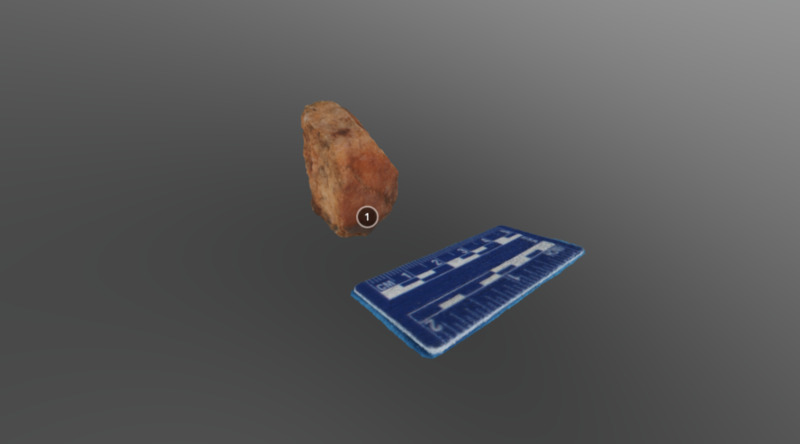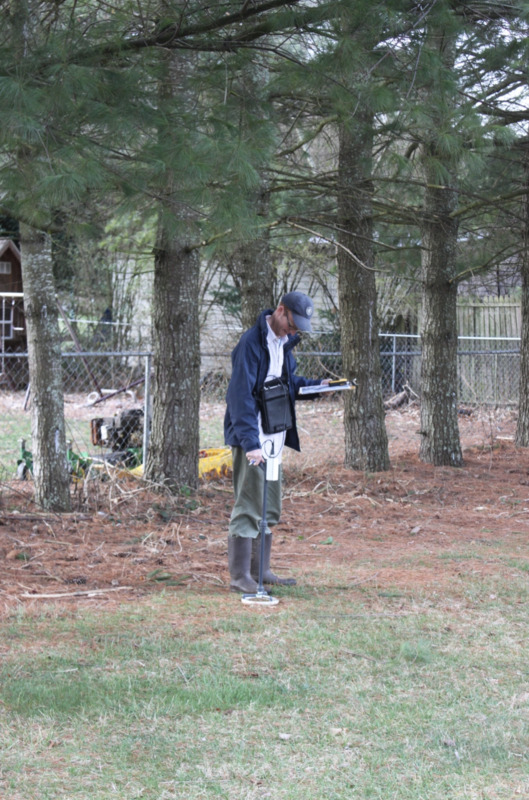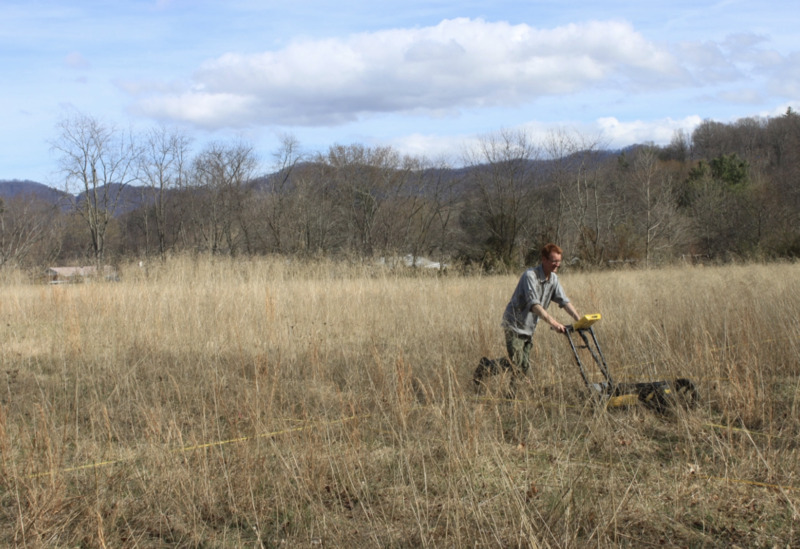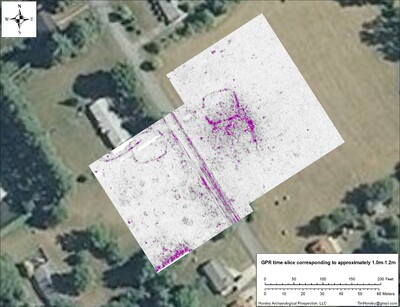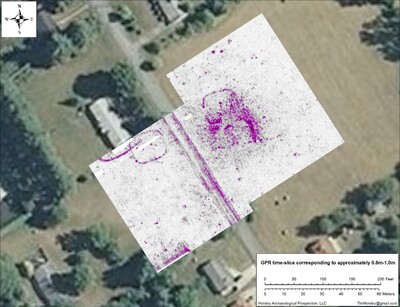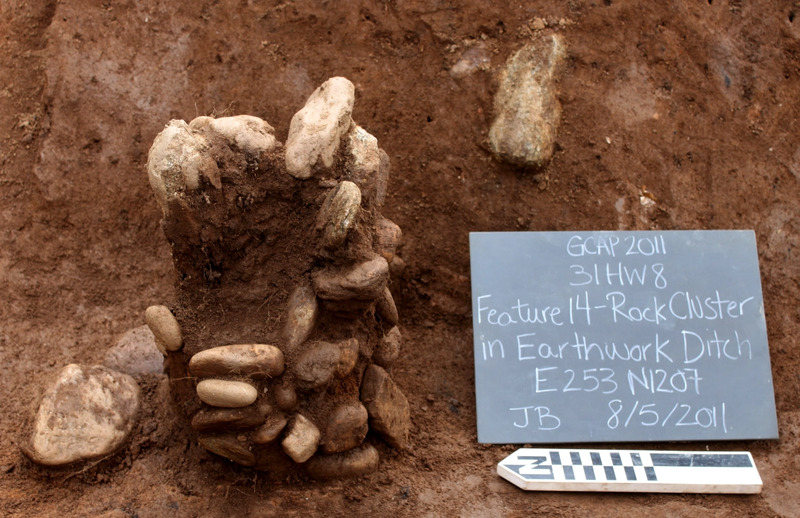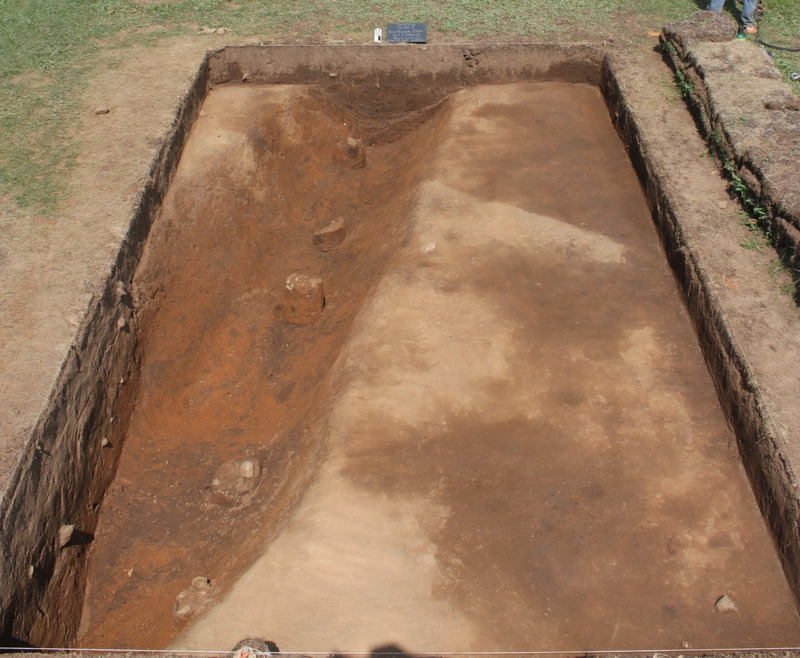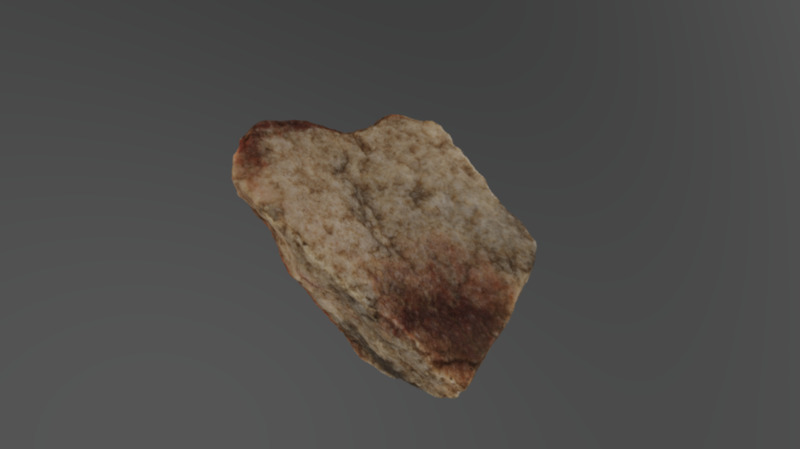21st Century Excavations
The excavations carried out from 2010-2012, led by Dr. Alice Wright, are the most recent at the site. This series of excavations utilized geophysical technology to learn more about the unexcavated surface below and potential village around Mound No. 2. The project also posed a new set of questions, based on the previous findings at Garden Creek. This section of the exhibit explores the Garden Creek Archaeological Project (hereafter GCAP. GCAP involved residents of the local community along with individuals from other fields of work.
Geophysics
What are Geophysical Technologies?
Geophysics is the study and observation of earth physics. It employs a suite of technology that is used across many fields in order to observe various subsurface components and to monitor or detect different anomalies on whatever surface is being monitored. Archaeologists commonly use geophysical applications, such as ground penetrating radar and magnetometry, to test suspected site locations for anomalies below the surface. GCAP utilized archaeological geophysics to learn as much as possible about the remains of the site with as little as possible disturbance to those remains. At Garden Creek and elsewhere, the use of geophysical techniques promotes ethical field archaeology that can avoid impacting certain features (e.g., burials) and minimize damage to the archaeological record.
The two maps on the left were produced with GPR during the Garden Creek Archaeology Project. GPR and magnetometry both acheive the goal of observing subsurface conditions through different means:
Ground penetrating radar uses radar pulses to detect what is below the surface. In most cases, the user pushes or pulls the device at a steady rate over the area that they desire to map. The radar pulses will be blocked by solid objects that cause a lack of pore space below the surface, such as concrete, stones, bricks, etc. Archaeologists use this method frequently to locate buried features, such as houses or walled structures.
Magnetometry is a method that detects shifts in the earth's magnetic field in given areas. Certain activities, such as long-term use of a space for burning or buried objects can be detected by magnetometers. These devices are generally held by the user as they walk across a given surface or area.
Geophysical Methods use at GCAP
The combination of magnetometry and GPR allowed GCAP archaeologists to get a sense of structures and features below the ground at Garden Creek. These findings guided targeted excavations of specific anomalies (also known as ground truthing), such as Enclosure No. 1, which revealed some of the clearest evidence for long-distance interaction at the site.
GCAP Excavation
Interaction at Garden Creek
Once the initial surveying was completed, the GCAP crew broke ground, excavating for two seasons. The excavation successfully unearthed the habitation zone was thought to have been irrevocably impacted by residential development in the area. In addition to documenting the Middle Woodland Period village, GCAP generated evidence supporting claims that the Middle Woodland inhabitants of interacted and shared information across vast portions of eastern North America. Archaeologists have debated the extent and intensity of such interactions for years, and sites like Garden Creek shed light on what exactly such interactions may have entailed. artifacts found at Garden Creek provide evidence that heavily supports this concept:
Evidence of participation in different interaction spheres, such as the Hopewellian Interaction Sphere, can be seen in the earthen architecture and artifacts from Garden Creek’s Middle Woodland monuments (e.g., Mound No. 2, Enclosure No. 1). The evidence of such interactions includes exotic lithic materials, ceramic styles, and artifact types that are common at Ohio Hopewell sites, and distinctive forms of monumental earthen enclosures that characterize Middle Woodland ceremonial sites in the Ohio Valley.
Although we live in a global world where communicating with others from long distances is easy, there are many misconceptions regarding long distance connections of peoples across North America other prior to 1492. GCAP examined a few possible means for how interactions between groups generated the Middle Woodland archaeological record at Garden Creek, including:
Multi-Community Assembly
The multi-community assembly theory suggests that an assemblage of artifacts that are sourced from different places results of groups of people from different communities coming together to build a monument or settlement. Sites, such as the famous Poverty Point archaeological site in Louisiana, provide clear lines of evidence that this has occurred in North America. The collective labor efforts to build monuments and structures, potentially for ritual use among multiple different communities or family groups, result in large assemblages that have varying associations. This theory was suggested as one of the causes for the variation across the Garden Creek assemblages excavated from Mound No. 2.
Deliberate Extra-Local Acquisition
The concept of deliberate extra-local acquisition describes interaction involving individuals from communities who sought religious authority by acquiring new, exotic materials and ideas to be used in new rituals. This idea is famously applicable to Hopewell, Ohio, where community members made one major trip to Obsidian Cliff, Wyoming and returned with hundreds of pounds of obsidian to subsequentially use for crafting tools, many of which were found within monumental contexts. This type of interaction may also explain the distribution of copper from Lake Superior and mica from the Southern Appalachians at Hopewell sites. At Garden Creek, local religious practitioners may have deliberately sought materials or, more plausibly, ritual knowledge at Ohio Hopewell sites, which they then brought home to implement locally novel ceremonial activities, such as the construction of earthen enclosures.
